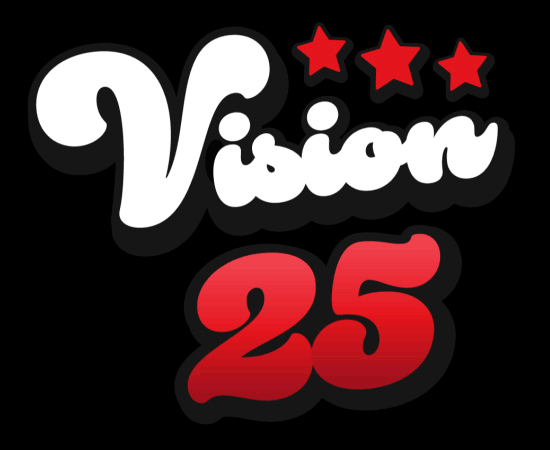
by Joseph Landes
Managed service providers (MSPs) in The 20 play a very important role in the adoption of cloud IT environments and the evolution of technology for the small and medium-size businesses they serve. This is particularly true with a powerful, yet complex, cloud environment like Microsoft Azure. SMBs look to MSPs in The 20 to expertly optimize itto fit their needs. But MSPs should also be on the lookout for how Azure can improve their own business needs—namely decreased costs and higher gross profit margins.
Here are five tips from Nerdio for The 20 members to optimize Azure costs and infrastructure to increase margins and make more money offering and reselling Azure.
1. Become a Microsoft Cloud Solution Provider (CSP) Reseller
Becoming a CSP reseller makes it easier for MSPs to transact Azure. In addition, CSP resellers receive a discount off Azure list prices via a CSP distributor—typically large providers—and thereby increase margins. CSP resellers are also eligible for various incentives that Microsoft makes available to its CSPs based on growth objectives. These incentives are incremental to the discount received on Azure consumption and can be in the 10% range or more when added up. Reach out to an IT distributor and ask how to become a CSP reseller or visit Microsoft’s website for more detailed information.
2. Leverage Azure Reserved Instances
The cost of virtual machines (VMs) in Azure is the single most expensive component of a typical MSP’s IT environment. Reserved instances (RIs) are reservations of a specific type of compute capacity (i.e., VM family/series) in a specific geographic location (i.e., Azure region) for a predefined period of time (12 or 36 months). Depending on the above specifics, using RIs and reserving compute capacity ahead of time can save you from 20% to 57% relative to the list pay-as-you-go price. They do require some advance planning, budgeting, and structuring of your Azure account the right way, but can significantly increase the profitability of your Azure practice.
3. Capitalize on Azure Hybrid Usage
Microsoft has created a special entitlement called Azure Hybrid Usage (AHU) that allows MSPs to pay for Windows Server via another licensing program and not through Azure. Essentially, you can bring the Windows Server licenses you already paid for to the cloud for free. As a result, the Windows Server OS meter stops spinning. AHU is a benefit unique to Azure; you can’t bring your own Windows server license to other major cloud providers. Combining RIs with AHU and CSP software subscriptions can reduce the cost of VMs by up to 80%. It goes without saying that the margin impact to an MSP from such significant cost reductions cannot be overlooked.
4. Auto-scaling for Cost Optimization
The value proposition of Azure as a public cloud is its utility-like consumption billing model: Pay only for what you use. To do this, MSPs need a mechanism to know what compute is needed and when, and a system that automatically resizes workloads to fit the demand at any given time. This means that if a VM doesn’t need to be on, a system
needs to be in place to know it and act on it by shutting down the VM at the appropriate time and then turning it back on when it’s needed again.
Azure automation platforms do exactly this, as MSPs can set business hours for each VM and tell the system what to do with the VM outside of those hours: leave it alone, shut it down, or change it to something smaller. The system will then automatically execute these instructions, resizing the VM after the end of business hours and then prior to the start of the next business day.
5. Burstable VM Instances
B-series Azure VMs are known as “burstable” VMs. They are used for non-CPU-intensive workloads (for example, domain controllers and file servers) and cost about 50% of an equivalently sized D-series VM. Burstable VMs are cheaper because Azure imposes a quota on how much of the total CPU cores can be used. Every second that the VM is using less than its quota it is “banking credits” that can be used to burst up to the total available CPUs when needed. While bursting, the VM is consuming its banked credits. Once the credits run out, the VM’s CPU utilization is throttled down to a lower utilization quota.
As you can see, these tips provide multiple ways for MSPs in The 20 to optimize their Azure consumption and increase their profitability. Understanding these tips will help you reconfigure their Azure architecture, determine how much margin they can achieve, and recognize how to build a successful and profitable cloud practice in Azure. Nerdio’s automation platform allows the members of The 20 to achieve all of this and much more. Check us out at the upcoming VISION event or on our website at www.getnerdio.com.
Interested in learning more? Don’t miss Nerdio at The 20’s upcoming VISION Conference!
Joseph Landes is the Chief Revenue Officer at Nerdio—a cloud company whose mission is to enable MSPs to build successful cloud practices in Microsoft Azure. He previous worked at Microsoft for 23 years leading high performing international sales and marketing teams. When not visiting MSPs you can find him trying to visit every country in the world or reading great literary fiction.

by Tom Darnall
Managing one print environment can be hard enough. Managing several at the same time can seem downright daunting. And for MSPs whose cost structures are highly sensitive to extra investment of time and resources, every second spent struggling with a print management issue can weigh heavily on the bottom line.
MSPs have another fundamental concern: customer satisfaction. Unlike an organization where print infrastructure is managed in-house, an MSP’s end users can decide to contract with another provider. That puts particular importance on retaining existing customers, which means that quality of service has to remain uncompromisingly high. Ongoing printing problems, even minor ones that might be tolerated elsewhere, can put an MSP out of business.
The catch is that, in addition to those challenges, MSPs also have a unique set of print-management requirements. Ideally, they want a single, uniform solution that allows them to deliver a core suite of services to customers while also providing a consistent management experience. Yet MSPs’ customers can have very different environments and a wide variety of printing needs, so any solution also has to be versatile enough to accommodate these disparities.
With that in mind, a print-management solution optimized for MSPs should meet the following criteria:
Powerful: Admins have access to a comprehensive suite of printer- and driver-management tools, including advanced features.
Intuitive: Profile settings as well as automated deployments and installations are easy to configure with granular precision.
Versatile: The solution integrates seamlessly with any environment without sacrificing reliability, functionality or ease of use.
Robust: Single points of failure and WAN dependencies are either reduced or eliminated completely, ensuring maximum uptime and uninterrupted printing.
Centralized: The MSP is able to fully manage the print environment for every customer, no matter how distributed, from a single pane of glass.
Consistent: The administrative experience is the same across the entire customer pool, regardless of differences in printer fleets or printing habits.
Streamlined: Administrative tasks are as efficient as possible and don’t require multiple interactions when one will do.
Scalable: The print-management solution effortlessly adapts as the customer’s print environment shrinks, expands or evolves over time.
Another consideration is that any print-management solution truly geared toward MSPs should also offer opportunities to add value. For example, one customer might want secure printing capabilities, whereas another wants to implement cross-platform mobile and BYOD printing. An MSP who’s able to provide this kind of added value with minimal physical infrastructure and low administrative overhead is going to be much more attractive to those customers.
PrinterLogic meets these demanding MSP criteria
Although traditional print-management solutions like print servers can’t fulfill all those demanding criteria, PrinterLogic’s enterprise print-management solutions are able to meet them without reservation.
PrinterLogic’s next-generation software uniquely combines the simplicity and reliability of direct-IP printing with the power of centralized management, enabling MSPs to manage the print environments of their entire customer pool from a single web-based console. This also gives PrinterLogic core capabilities like eliminating print servers, advanced printer deployments without the need for GPOs or scripts, self-service printer installations, and seamless integration alongside virtual solutions.
That’s not just theoretical. MSPs like Helion Automotive Technologies and Strata Information Technology have implemented PrinterLogic’s low-footprint, on-premises software solution for their customers in very different sectors. Helion, focuses on the automotive industry, supplying 650 car dealerships and their 28,000 employees with core IT services. Strata IT draws some of its largest customers from the healthcare industry.
Both MSPs saw a massive reduction in the time spent on print management after implementing PrinterLogic. Strata IT immediately experienced an estimated 50% drop in print-related support tickets, whereas Helion has leveraged PrinterLogic to cut 20 hours off each of its regular print-server migrations. The two MSPs also cited increased customer satisfaction as a result of their increased responsiveness, the reduced number of routine printing problems and the improved visibility into new areas of the print environment, such as consumable costs.
The next-gen features you expect from a next-gen solution
PrinterLogic also offers a SaaS counterpart. This zero-footprint, cloud-based solution offers feature parity with PrinterLogic’s proven on-premises software, giving MSPs and their customers the option of a flexible, enterprise-grade print-management solution that is infinitely scalable and incredibly cost-effective. Pioneer Technology is just one MSP that is using PrinterLogic’s SaaS solution to further its “cloud-first” philosophy and retain a competitive edge among peers in the banking, healthcare and retail industries.
And when it comes to adding value, PrinterLogic is able to provide native pull printing and mobile printing capabilities along with comprehensive print auditing tools. This kind of advanced functionality is increasingly sought after by organizations that are looking to harden their print security, provide tightly controlled but full-featured printing to their BYOD users, or gain insight into printing habits for the sake of cost-cutting and efficiency.
Tom Darnall recently joined the product team at PrinterLogic. He moved to Utah four years ago from Portland, where he held executive, product management and marketing positions at HP, Symantec, and other software firms. Tom received a B.A. in Communications from Brigham Young University and completed a summer executive MBA program at Stanford. Off the clock, Tom loves to explore the desert southwest, do landscape photography, and see live jazz in Las Vegas.
To learn more about The 20 and how we can help your business, be sure to check us out here.
The past 100 years or so have seen an incredible advancement in technology, and the new found age of Artificial Intelligence is certainly no small part of it. Everything and everyone uses Machine Learning concepts to make life easier, like Siri or Alexa, but the dark side of the same can definitely be used to make life a living hell.
At the Black Hat USA 2018 conference a couple of weeks ago, security researchers at IBM considered a very likely scenario in the near future and created DeepLocker – a new generation malware which can fly under the radar and go undetected by way of carrier applications (like video conferencing software) until its target is reached. It uses an A.I. model to identify its target using indicators like facial recognition, geolocation and voice recognition — all of which are easily available on the web. Weaponized A.I. appears to be here for the long haul and could target anyone.
Scary.
DeepLocker is just an experiment by IBM to show how open-source A.I. tools can be combined with straightforward evasion techniques to build a targeted and highly effective malware. As the world of cybersecurity is constantly evolving, security professionals will now have to up their game to combat hybrid malware attacks. Experiments like this allow researchers to stay one step ahead of hackers.
According to Marc Ph. Stoecklin, principal research scientist at IBM Research, “The security community needs to prepare to face a new level of A.I.-powered attacks. We can’t, as an industry, simply wait until the attacks are found in the wild to start preparing our defenses. To borrow an analogy from the medical field, we need to examine the virus to create the ‘vaccine.’”
But back to DeepLocker…
DeepLocker’s Deep Neural Network model provides “trigger conditions” that need to be met for malware to be executed. In case the target is not found, the virus stays blurred inside the app, which makes reverse-engineering for experts an almost impossible task.
To prove the efficiency and precision of A.I.-based malware, security engineers demonstrated the attack using the notorious WannaCry virus. They created a proof-of-concept situation where the payload was hidden inside a video conferencing program. None of the anti-virus engines or sandboxes managed to detect the malware, which resulted in this conclusion by researchers:
Imagine that this video conferencing application is distributed and downloaded by millions of people, which is a plausible scenario nowadays on many public platforms. When launched, the app would surreptitiously feed camera snapshots into the embedded A.I. model, but otherwise behave normally for all users except the intended target.
What is more, applications like Social Mapper can be implemented inside the malware which would make the detection of a potential target an even more manageable task.
Indeed, the power of Artificial Intelligence is probably limitless, but the experiment proves that security researchers still have a lot of work to do when it comes to cybersecurity. The examination of various apps should be taken into consideration, and any unexpected actions should be flagged immediately.
Deep Instinct’s Solution
To combat these cyber threats we suggest deep learning from Deep Instinct as an incredibly effective solution. The 20 has chosen Deep Instinct, the first company to apply deep learning to cybersecurity, for our MSP members to provide superior deep learning cybersecurity capabilities across service offerings and safeguard customers against current and future cyber threats.
Their solution provides full protection that is based on a prediction and prevention first approach, followed by detection and response, with unmatched efficacy against any cyber threat.
Want to learn more about the IT services we deliver? Contact us today!



